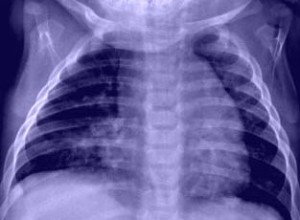Reactive airway disease is a term used to refer to a reversible narrowing of airways. This condition is not a diagnosis but a term used until a more precise diagnosis is made. It is sometimes referred to as bronchospasm. In reactive airway disease, the lungs overact to some irritants and cause wheezing. Many people think that when a child is wheezing, he or she has asthma, however, this is not always the case.
Not all wheezing is as a result of asthma, therefore the term reactive airway disease is used until a doctor can make a diagnosis to determine whether it is asthma or another condition. Reactive airway disease abbreviated as RAD cannot be cured though it may be controlled and prevented.
Causes of Reactive Airway Disease
It is not known why a person develops the wheezing but there are possible triggers that have been associated with overactivity, narrowing, and inflammation of airways. Among the possible triggers are such as allergens. Things that cause allergies and allergic reactions may make one overactive. Viral infections can also trigger the attacks.
Pollens, grasses, trees, and certain pets may make one to be overactive and result to reactive airway disease. Molds, dust, certain foods, and strong odors could also be implicated in RAD. Exercising may be another possible trigger. Children and adults may develop this condition due to irritants such as cigarette smoke, aerosol sprays, pollutions, paint fumes, and strong odors.
Weather changes may affect children and trigger the episodes of RAD. Stress and emotional upset may not cause the problem, but they could act as triggers of reactive airway disease. Structural abnormalities in lungs, cardiovascular disease, cystic fibrosis, and inhaling stomach acid in lungs from the gastroesophageal reflux may be another possible cause. If your child has frequent coughing and breathing problems, she needs to be evaluated by a doctor. Crying and exercising may make the condition worse.
What are symptoms of reactive airway disease?
In a reactive airway disease attack, the muscle of lungs tighten or constrict, a condition known as bronchospasm, and the airways become inflamed and swollen. Due to this, the airways narrow down and they produce symptoms, which include wheezing, frequent coughing, and recurrent respiratory infections. These are among the early warning signs.
Other symptoms include shortness of breath and tightness in chest. Although older children can tell when they have difficulty breathing, in young children, it is difficult to know about it since they are unable to tell it to parents or doctors. In young children, some of the signs to look out for are difficulties in feeding and irritability.
Another thing is that this condition may persist for a long time without detection. On top of that, because children only tend to have symptoms when they are exposed to triggers, it may take time before it is detected particularly if there are no triggers present.
What are the signs of a reactive airway disease episode?
If your child has RAD, it is likely that flare-ups will occur time in time. There are signs that may precede a flare up and they include irritability, nausea, poor feeding, dry coughing, sweating, and nonstop coughing. The skin of a child may suck in between the ribs when the child is breathing in. Fatigue is also likely to be seen.
The earlier you are able to stop those episodes the better since you avoid the condition from getting worse. A child may not be wheezing therefore, other signs may assist in determining if a RAD episode is likely to occur.
When to seek medical help
Medical help may be needed when first signs of RAD are noticed even if there is no wheezing. When medications are given to a child and the attacks continue often with shortness of breath and wheezing, medical care may be required. If oral temperatures are more than 102 degrees Fahrenheit, a medical attention is needed.
Thickening of sputum, muscle aches, and chest pain should compel one to seek a healthcare provider for examination. People who develop problems or side effects from the medicines they are using to treat reactive airway disease need to seek help of a doctor. For example, swelling, itching, rash, and trouble breathing caused by drugs requires an evaluation to establish which medicines can work better without adverse side effects.
An immediate medical help is needed if the medicines that used to stop wheezing are no longer effective and the coughing has increased. When a child acts abnormal, shows color changes like blue lips, or passes out (fainting), it should necessitate an emergency medical care.
Sometimes reactive airway disease is confused with asthma, however, there are key distinctions between the two. Patients having RAD may experience same symptoms as people with asthma but the cause of their condition may not be known and might not be alleviated using drugs made for asthma treatment. People with reactive airway disease are perceived to have less sensitivity to pollutants than people with asthma.

